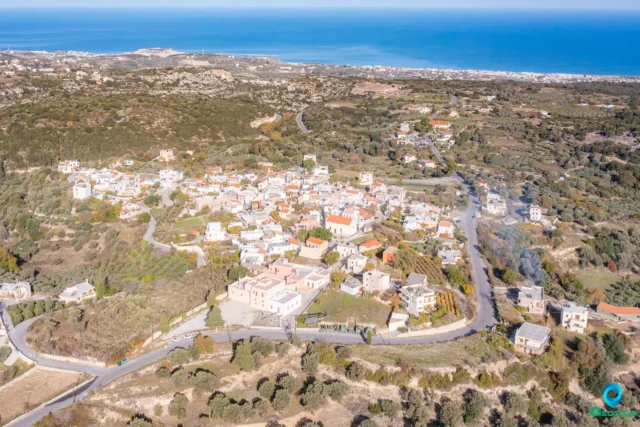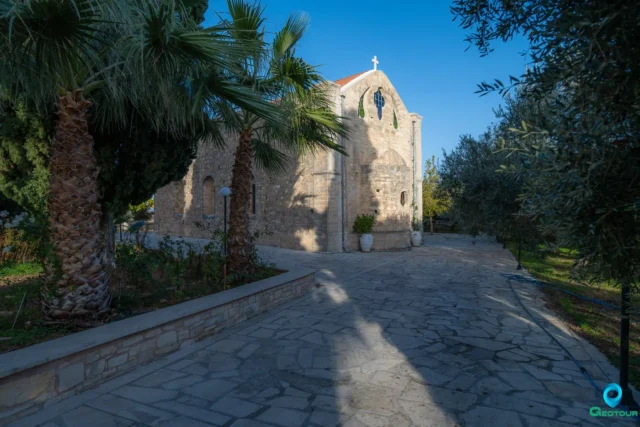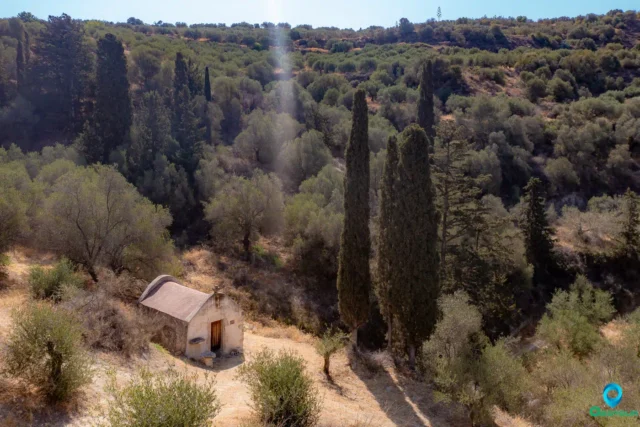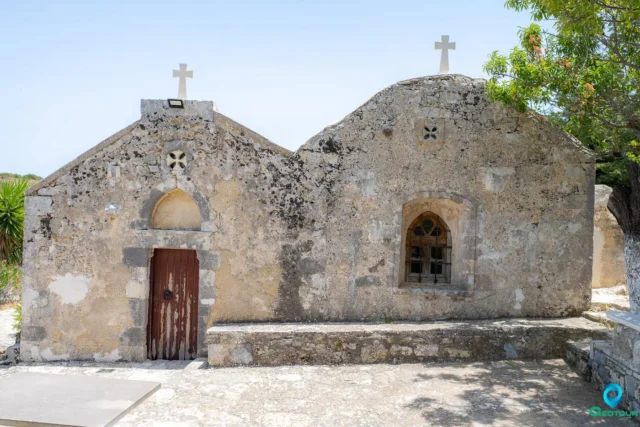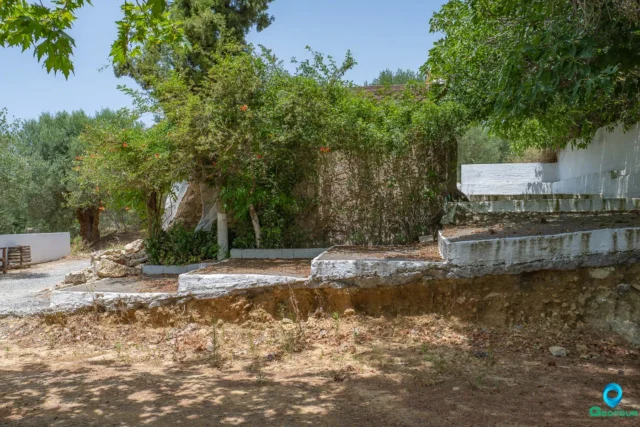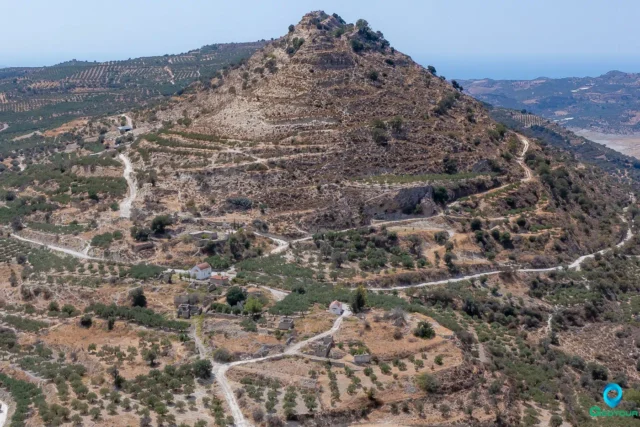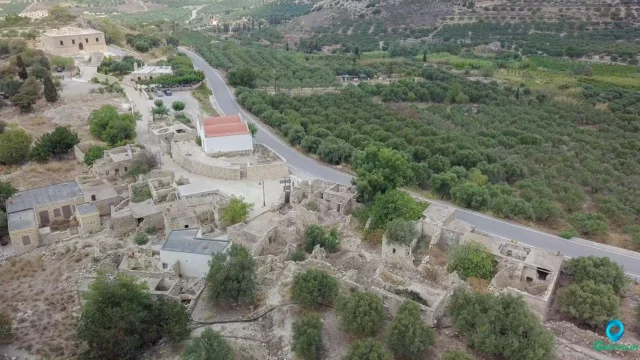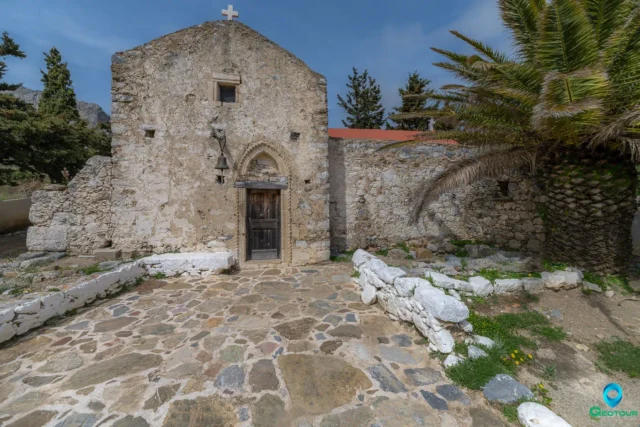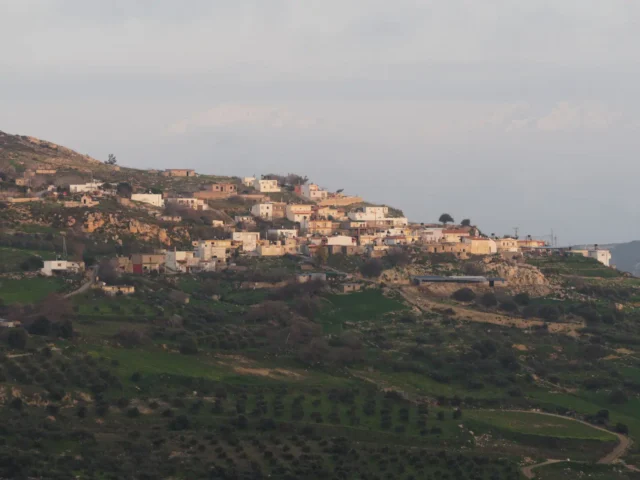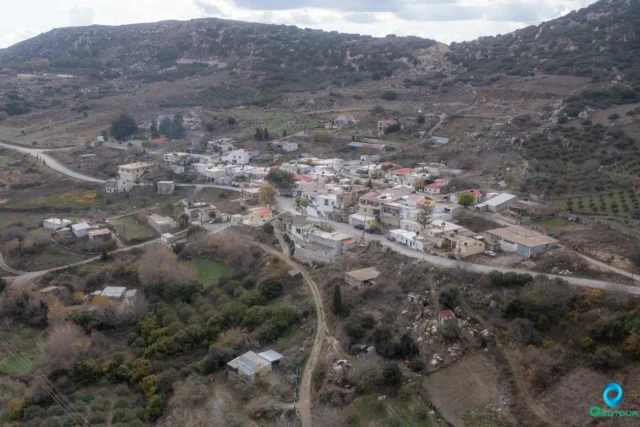829
listings found
Categories
Active filters:
Selli, Rethymno
Selli (Σελί) is a village situated in the Rethymno regional unit on the island of Crete, Greece. It is located approximately 17 kilometers southeast of Rethymno town, nestled in the […]
Gerokampos Tholos Tomb
The Lebena Gerokampos Tholos Tomb is an Early Minoan I-II (c. 3100-2600 BCE) archaeological site located near Lentas, on the southern coast of Crete, close to the ancient Minoan settlement of Lebena. The tomb, with an interior diameter of approximately 5 meters, is typical of tholos tombs, with a circular chamber built of large stones and a corbelled vault. The tomb also features several smaller chambers or annexes, which were added later. These annexes, along with the main tholos, served as spaces for burial and ritual activities. A large quantity of pottery, including pyxides, tankards, cups, and bowls, was found in the tomb. The tomb contained the skeletal remains of numerous individuals, providing evidence of collective burial practices. Other significant finds from the tomb include jewelry, tools, and figurines.
Chromonastiri, Rethymno
Chromonastiri is a traditional Cretan village with a rich history dating back to the 12th century. It's located 11 kilometers southeast of Rethymno, near Mount Vrysinas. The village is known for its Venetian-era architecture, particularly the restored Villa Claudio, now home to the Chromonastiri Military Museum.
Chromonastiri also boasts several significant Byzantine churches, including the 11th-century Church of Panagia Kera with its unique architectural features and surviving frescoes. The Church of Agios Eftychios at Perdiki Metochi is another notable Byzantine church, featuring impressive frescoes and a distinct folk art style.
The village square houses the renovated Prinari olive mill, now an educational center showcasing the history of olive oil production and traditional Cretan life. Chromonastiri is a designated traditional settlement, offering visitors a glimpse into Crete's cultural heritage through its architecture, religious sites, and historical landmarks.
Vrysinas Peak Sanctuary
The Vrysinas Peak Sanctuary, located on the slopes of Mount Vrysinas in Crete, is a significant archaeological site that offers valuable insights into Minoan religion and culture. Excavations have revealed a wealth of artifacts, including human and animal figurines, pottery, horns of consecration, and a fragment of a libation table with a Linear A inscription. The sanctuary's unique position as the sole Neopalatial peak sanctuary in the region highlights its importance in the religious landscape of Minoan Crete. The site is easily accessible to visitors and provides a fascinating glimpse into the spiritual world of the Minoans.
Agia Paraskevi in Aitania
Agia Paraskevi, a 14th-century Byzantine church near Aitania village in Crete, is adorned with well-preserved frescoes depicting saints like Vlasios, Titus, and John the Theologian, alongside biblical scenes. The church, accessed via a steep dirt road, features a single room and a sanctuary with unique motifs like the Melismos and Christ as the Great High Priest. Frescoes on the north and south walls portray various saints, including military saints, while the arch showcases scenes from the Dodekaorton. Local tradition recounts miraculous healing associated with the church, with a ritual involving holy water from a now-dried spring. Restored in 2003, the church's exterior is simple, with a buttress and a stone table used for bread blessing during festivals.
Agios Ioannis Theologos in Galatas
Byzantine-era, two-aisled church near the Minoan Palace of Galatas in Crete. Features an arkosolio and possible monastic remains. Frescoes in poor condition.
Kourtes, Gortyna
Kourtes, a deserted village in southern Heraklion, Crete, reveals Byzantine and Ottoman history. The name suggests a possible Byzantine military base. Located 3km south of Zaros, it comprises Pano and Kato Kourtes ruins, with the Three Hierarchs church remaining from Mesochori. The site includes Late Minoan tombs, an ancient Roman-era aqueduct with caves and a cistern, and remnants of a pottery kiln, reflecting its past agricultural and craft traditions. Historical records show Ottoman and Christian populations, with a gradual decline to its current deserted state. Churches include Agios Georgios, Three Hierarchs, and Christ.
Psalida abandoned village
Psalida (Ψαλίδα), an abandoned village in Gergeri, Crete, offers a glimpse into the island's past. Dating back to the 16th century, the village was once home to farmers, as evidenced by animal feeders found in the ruins. Historical records from 1583 mention Psalida as a dependency of Gergeri with 60 inhabitants. Today, only the stone houses remain, standing as a testament to the traditional way of life. Psalida's location provides stunning views of the surrounding countryside. The village is a reminder of Crete's rich history, including the Greek War of Independence and conflicts between the Christian and Muslim populations.
Etia, Sitia
Etia, located in the Armeni municipality in eastern Crete, is an uninhabited village with a rich history dating back to the Byzantine era. Known for its well-preserved Venetian mansion, the De Mezzo, Etia was once a major settlement. The village also features the churches of Agia Aikaterini and Agios Ioannis, both bearing traces of Byzantine wall paintings. The De Mezzo mansion, a significant example of Venetian architecture, has undergone extensive restoration. Etia, though deserted, remains a protected traditional settlement and a testament to Crete's diverse heritage.
Voila abandoned village
Voila, an abandoned village near Chandras in Sitia, Crete, offers a glimpse into Crete's Venetian and Ottoman past. The village, deserted since the 19th century, likely owes its name to a Byzantine surname, a term for boyars, or a place for oxen. Voila was once a sizeable village, documented in Venetian censuses of the 16th century with over 300 inhabitants. A prominent landmark is the Venetian tower, featuring a 1742 Turkish inscription and carvings of axes, cypresses, and pentagrams. Local tradition links the tower to a Janissary named Tsin-Alis. The village also houses the ruins of the 15th-century church of Agios Georgios and Panagia, likely built by the Salamon family, potential ancestors of the poet Dionysios Solomos. Two fountains with Turkish inscriptions and remnants of a Venetian castle further illustrate Voila's rich history.
The Archaeological Collection of Ierapetra
The Archaeological Collection of Ierapetra, housed in the former Ottoman School built in 1899, offers a captivating journey through the history of the region, from the Bronze Age to the […]
The Archaeological Museum of Agios Nikolaos
The Archaeological Museum of Agios Nikolaos, Crete, houses a remarkable collection of artifacts spanning from the Neolithic period to the end of the Greco-Roman era. Established in 1970, the museum showcases the evolution of art and culture in Eastern Crete. The collection includes finds from the Early Minoan cemetery of Agia Fotia and the Minoan palace of Malia. One of the most renowned objects is the "Goddess of Myrtos," a unique libation vessel from the Pre-palatial period. The museum's rectangular building features eight exhibition halls arranged around a central atrium, facilitating a clear and intuitive flow for visitors. The museum actively engages with the public through temporary exhibitions and educational programs. It is open from 08:30 to 15:30, closed on Tuesdays. Ticket prices vary depending on the season, with combined tickets available for multiple archaeological sites and museums in the region.
The Archaeological Museum of Siteia
The Archaeological Museum of Siteia, established in 1984, serves as a vital repository of the rich history of eastern Crete. Born from the dedication of local communities and authorities, the […]
Agios Pavlos Monastery near Paranymfoi
The Agios Pavlos Monastery is a Venetian-era ruin near Paranymfoi, Crete. Located in the Asterousia Mountains, it once served as a hermitage and monastery. The site features a single-aisled basilica church with traces of frescoes, a carved doorway, and ruins of monks' cells. The monastery, linked to the scholar Iosif Filagris, flourished during the Venetian period but was abandoned in the 20th century. The surrounding area shows signs of inhabitation since antiquity, including possible evidence of an ancient sanctuary. The monastery is accessible by a dirt road from Paranymfoi and is situated above the Porofarago gorge, near the hiking trail to Tries Ekklisies.
Treis Ekklisies, Archanes – Asterousia
Treis Ekklisies (Three Churches) is a small coastal settlement located 64 km south of Heraklion, in the Asterousia Mountains in Crete. The village is named after the three churches of […]
Amigdalos, Archanes – Asterousia
Amigdalos (Αμύγδαλος) is a small mountainous village in the Municipality of Archanes-Asterousia in the Heraklion Regional Unit, Crete, Greece. It is located at an altitude of 595 meters, approximately 50 km south of Heraklion and 37 km south of Epano Archanes. The village was first officially recognized as a settlement in 1925. The name "Amigdalos" means "almond tree" in Greek, likely named after the abundance of wild almond trees in the surrounding region. Amigdalos has experienced a steady population decline throughout the 20th and 21st centuries.
Panorama, Minoas – Pediada
SEO from existing text
Custom Gem
Panorama, formerly Gournia, sits at the foot of Gurniani Korfi hill in Crete, 29.5 kilometers from Heraklion, and offers magnificent views. Records suggest it may have been a Venetian fief, evidenced by a coat of arms in the church of Agios Georgios. During the Ottoman period, it was mainly a Muslim village. After the Asia Minor Disaster, Greek refugees settled there, embracing local customs and focusing on agriculture, especially viticulture. The village has churches like Agios Georgios, Agios Fanourios, and Agia Marina. The name "Gournia" likely came from the small basins at the village spring. Historical accounts mention a Byzantine church, possibly Agios Georgios Styronas. The village relied on agriculture, producing grapes, raisins, olive oil, and cereals. Viticulture remains important to the local economy. "Panorama" was adopted in 1951 due to the village's stunning views. Local legends speak of caves with hidden treasures.
Steironas, Minoas – Pediada
Steironas, located on a hill, 10 km west of Arkalochori, Crete, has a history from the Venetian period, Ottoman rule, and Greek-Turkish population exchange. It's known for the Myragapi Traditional Folklore Rakokazano, showcasing traditional production of wine and tsikoudia, and the late Byzantine church of Panagia with frescoes and an icon of the Virgin Mary.











